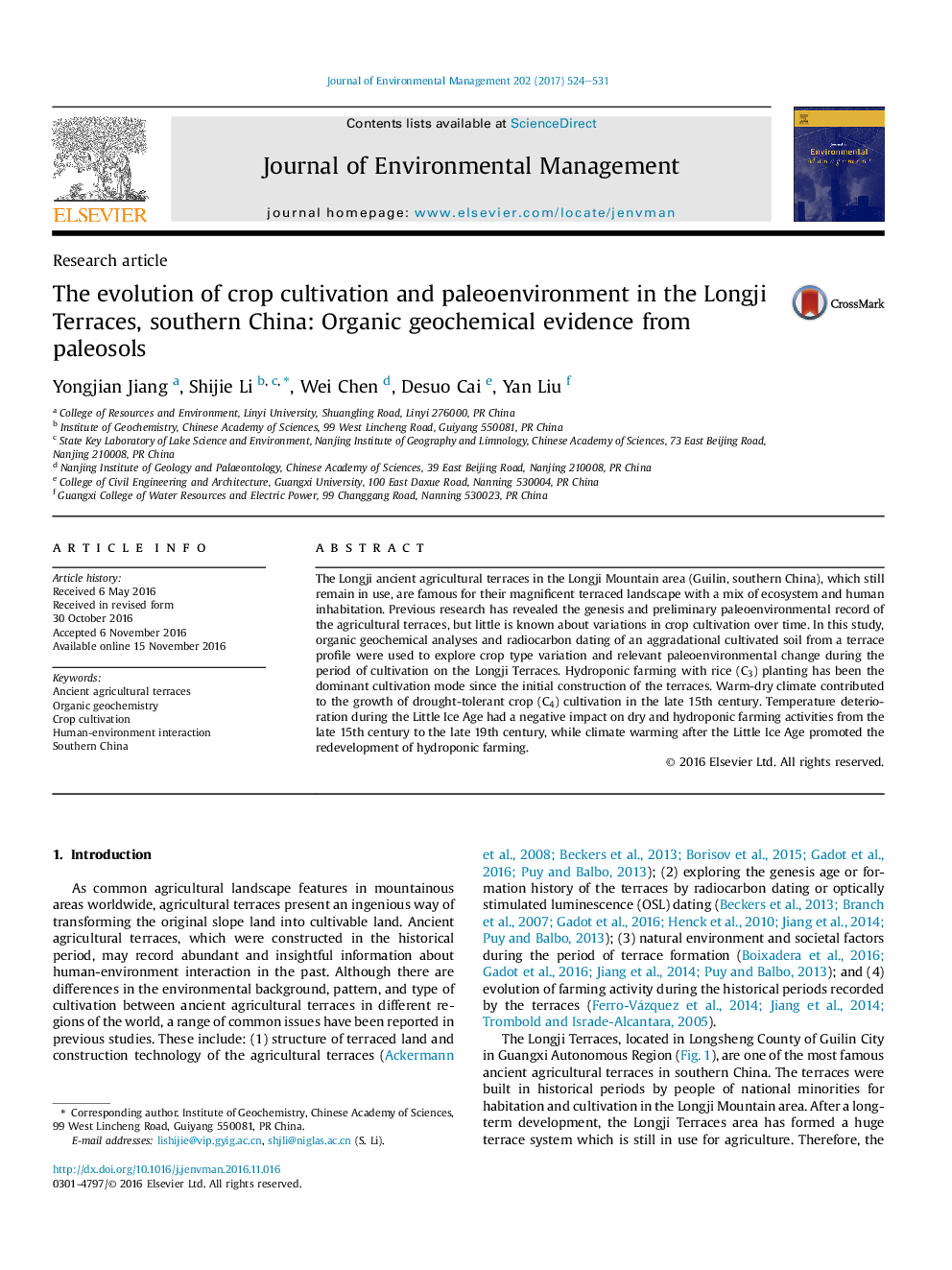| Article ID | Journal | Published Year | Pages | File Type |
|---|---|---|---|---|
| 5116870 | Journal of Environmental Management | 2017 | 8 Pages |
â¢Organic geochemical proxies reveal variations in cultivation in the Longji Terraces.â¢C3 crop was predominant during the historical cultivation.â¢C4 crop cultivation grew in the late 15th century under warm-dry climate.â¢Cultivation of C3 and C4 crops weakened during the Little Ice Age.â¢Warming after the Little Ice Age improved C3 crop cultivation.
The Longji ancient agricultural terraces in the Longji Mountain area (Guilin, southern China), which still remain in use, are famous for their magnificent terraced landscape with a mix of ecosystem and human inhabitation. Previous research has revealed the genesis and preliminary paleoenvironmental record of the agricultural terraces, but little is known about variations in crop cultivation over time. In this study, organic geochemical analyses and radiocarbon dating of an aggradational cultivated soil from a terrace profile were used to explore crop type variation and relevant paleoenvironmental change during the period of cultivation on the Longji Terraces. Hydroponic farming with rice (C3) planting has been the dominant cultivation mode since the initial construction of the terraces. Warm-dry climate contributed to the growth of drought-tolerant crop (C4) cultivation in the late 15th century. Temperature deterioration during the Little Ice Age had a negative impact on dry and hydroponic farming activities from the late 15th century to the late 19th century, while climate warming after the Little Ice Age promoted the redevelopment of hydroponic farming.
